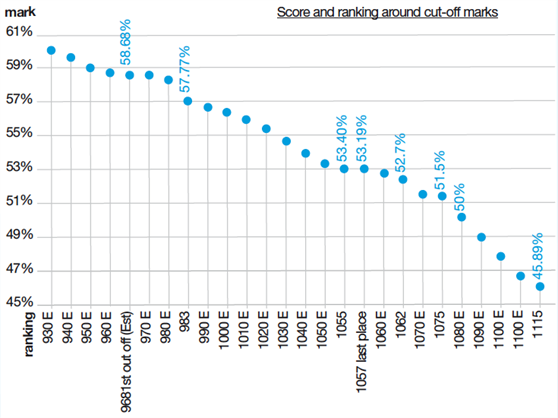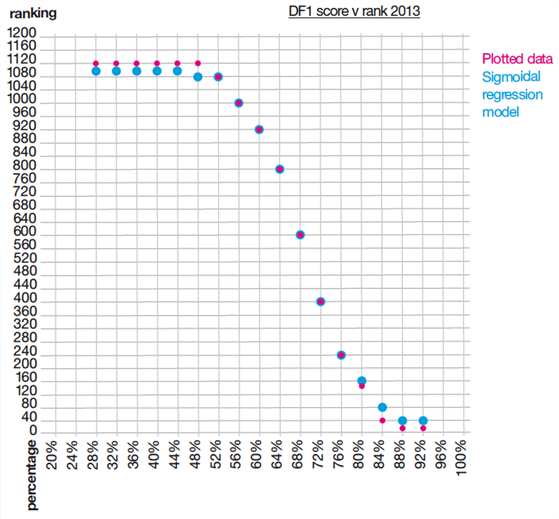 If you have just commenced foundation training read a personal perspective of the recruitment process and tell us about your own experiences of the system.
If you have just commenced foundation training read a personal perspective of the recruitment process and tell us about your own experiences of the system.
Ian Gordon surveys this rapidly changing landscape and offers his own opinion about what he sees.
The 2013 national recruitment process for dental foundation training places is over.
Launched in September 2011 for the 2012 intake, national recruitment has radically changed the method for recruiting and allocating dental graduates to training practices.
The national recruitment process has been repeated again this year, with very minor changes, commeneced again in September 2013 with the possible introduction of 'situation judgement testing' (SJT) with all schemes starting in September 2014.
Young colleagues report a number of common issues with dental foundation training and national recruitment which include:
- Graduates who have not secured a place
- Graduates concerned about their ranking
- DF1s unhappy with their training practice
- Trainers losing their appointment mid-year.
Of course, there has always been the occasional breakdown in the trainer/DF1 relationship but the nature of national recruitment has brought into sharp focus several issues, including the plight of those without a post and the removal of choice for both the trainer and the foundation dentist as to where and with whom they are working and training.
COPDEND has defended the present system in the past by describing it as being 'for only a year' (or two for GPTs). Foundation training is an important formative year and it is important that any concerns about the process are not lightly dismissed.
Posts v places
Government remains committed to funding sufficient DF1 posts to match the number of graduates expected to qualify from English and Welsh dental schools in any one year. The fact that approximately 30 such graduates were not able to secure a DF1 post in 2012 was an indication of the success of this undertaking.
Interestingly the Scottish Government has recently committed to funding a DF1 place for every graduate of a Scottish dental school in 2013. Whilst in England and Wales an additional 24 places have been funded for clearing raising the total number of places offered from 953 to 977.
Final numbers of England and Welsh graduates without a place have recently been announced as 42. Some of these dentists will have been rejected from the process because they have not accepted the post that was offered or because their application limited the choices that could be made available. The total of 42 dentists that have yet to be placed includes two dentists who excluded themselves by declaring a police conviction (but not following up within time limits with an explanation that these were for speeding offences).
It is therefore likely that some 42 graduates joined the 2013-14 application process with the knock-on pressure on places for that cohort.
Cross-border access
The Department of Health has said that under EU law a DF1 place cannot be allocated solely to English and Welsh graduates. This opens up the possibility of recruitment and selection being taken away from individual trainers and Deaneries and placed solely with the London Deanery. Whilst European Economic Area (EEA) graduates were always eligible to apply for a DF1 place they would have needed to travel to individual deaneries and practices all over the country for interviews (as did everyone).
National recruitment has made it much easier for EEA applicants to apply for a training place in the UK as they now only need to attend one interview centre for a single day. Thirty eight EEA graduates were successful in securing a place by this process in 2012.
Due process
Indeed, national recruitment is a process that sadly lacks some of the courtesy that might normally accompany a meeting between two or more dental professionals. This lack of consideration was evidenced during the interviews with, for example, no welcoming handshake for applicants and by the initial offer letters released late afternoon on Friday 16 December 2011 just as the dental schools were closing for Christmas. Those without an offer were left over Christmas and New Year relying on the conversations between colleagues on social media websites for support.
Emails to those left waiting for news about a training place were not sent out until mid January when candidates were told they:
- were either on a waiting list or
- had been rejected from the process as un-appointable or
- had passed the interview but not ranked by enough schemes and were therefore rejected on that technicality.
Those on the waiting list were then required to wait until the clearing process started in July 2012 when some 100 of the young dentists were offered places that had been freed up, mostly by those failing finals. The process is absolutely rigid and quite impersonal with, for example, no opportunity for a 'swap' scheme.
What now?
For the current scheme, the initial round of offers was delayed until January for 2013; at least avoiding the state of limbo over Christmas. However, the default position remains that candidates are not contacted until a place is available and are left guessing. This uncertainty causes considerable stress and anxiety especially as all communication is sent by email with a 48 hour deadline to accept a post or not.
2013 clearing has at the time of writing offered a place to all those ranked up to approximately 89 places above the initial ranking cut-off. Meanwhile, those without a place were left in limbo deprived of any official confirmation of their situation whilst waiting in hope of a place being freed up. Some of those waiting were given a few days notice of a place requiring complete relocation.
How robust is that?
More than 125 interviewers met all the eligible applicants to national recruitment over five days at six selection centres before places were allocated.
- Examiner variation is significant and evidenced through FOI requests which show that at each test centre there was a wide variation between the average score of each of the five panels of examiners - the harshest marking being panel E in Manchester (average score 63.5%) and the most lenient being panel A in Leeds (75.2%) - a variation of 11.7%
- Even within each centre there were wide variations with Leeds and Manchester both having a variation of 11.3% between the most lenient and the harshest.
- The average mark of test centres as a whole varied from 68.0% in Birmingham to 70.3% in Bristol
Are such variations significant?
There will be some averaging out, as these are only the results of one of the three assessment stations worth 40% of the mark - however, a variation of 40% of 11.7% is still 4.68% - which could be very significant and vary the candidates ranking by over 200 places on examiner variation alone.
That might not be that significant to those who secured a place (other than affecting their allocation of scheme or practice) but for those near the cut off, it is highly significant.
Changing the system
There were of course problems with the old system too, and nobody can dispute that.
Recruitment and selection whilst taught to trainers was not always practised and 'nepotism' featured too widely. Who you know was often a significant factor and it is understandable that the BDA and others supported national recruitment.
 However, what has since been delivered as a process is not entirely what was discussed. A process mirroring the recruitment of foundation doctors was certainly discussed in the planning of dental national recruitment. What is missing and is significantly different to the medical model is the use of any assessment by the dental school - there is no consideration of a CV or earlier dental school performance whereas for the F1 process, the medical school performance of the candidate is a significant part of the interview score.
However, what has since been delivered as a process is not entirely what was discussed. A process mirroring the recruitment of foundation doctors was certainly discussed in the planning of dental national recruitment. What is missing and is significantly different to the medical model is the use of any assessment by the dental school - there is no consideration of a CV or earlier dental school performance whereas for the F1 process, the medical school performance of the candidate is a significant part of the interview score.
Clarification
Clarification of the process has now been announced to ensure that there will be enough places DFT places available in England, Wales and Northern Ireland ('DFT Places').
 Because previous recruitment rounds have been oversubscribed, priority will be given in the 2014 DFT national recruitment process to those applicants for whom DFT is the only route available to be included on the UK Performers List (UKPL). For the avoidance of doubt, this scheme is also open to Scottish graduates.
Because previous recruitment rounds have been oversubscribed, priority will be given in the 2014 DFT national recruitment process to those applicants for whom DFT is the only route available to be included on the UK Performers List (UKPL). For the avoidance of doubt, this scheme is also open to Scottish graduates.
In the 2014 DFT national recruitment process, applicants who can be included on the UKPL without completing DFT will only be considered for DFT Places if there are insufficient suitable applicants who have no alternative route for entry on the UKPL.
The 2014 DFT recruitment process will be undertaken in one of two ways:
- At the close of the application stage, if it is deemed that are sufficient numbers of suitable applicants for whom DFT is the only route available to be admitted on the UKPL to fill all of DFT Places available, then applicants with alternative routes for entry will not progressed any further in the recruitment process;
or
- If at the close of the application stage it is deemed there is no certainty that there will be sufficient numbers of such suitable applicants to fill all DFT Places, then eligible applicants who have alternative routes for entry on the UKPL will be progressed to the selection stage of the recruitment process. If following the selection centre process there are sufficient suitable appointees for whom DFT is the only route available to be admitted on the UKPL to fill all available DFT Places, then priority will be given to such applicants.
Should there be insufficient number of such suitable applicants to fill all DFT Places, then applicants with alternative routes to entry on the UKPL may be offered DFT Places in the initial round. Any remaining applicants may be eligible for a second stage of offers (if needed) following the outcome of UK BDS/BChD results in June 2014.
 Ian was a vocational trainer thirteen times and Training Programme Director for several years. He currently has five foundation dentists working within his practice group. Ian works as a part-time associate dentolegal adviser in Dental Protection's Leeds Office.
Ian was a vocational trainer thirteen times and Training Programme Director for several years. He currently has five foundation dentists working within his practice group. Ian works as a part-time associate dentolegal adviser in Dental Protection's Leeds Office.